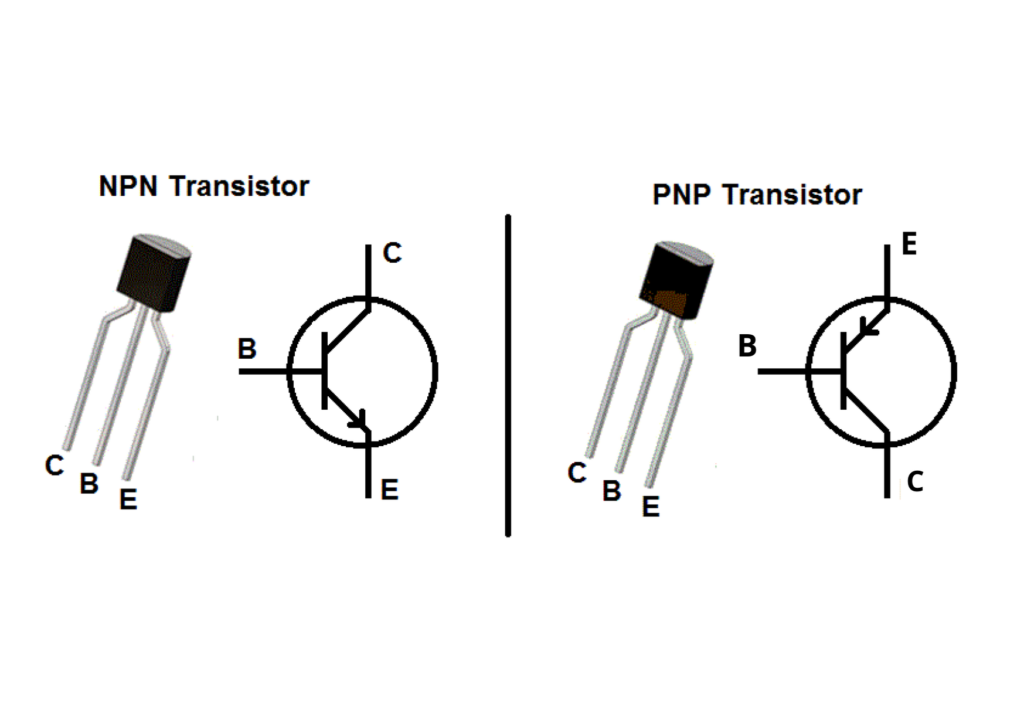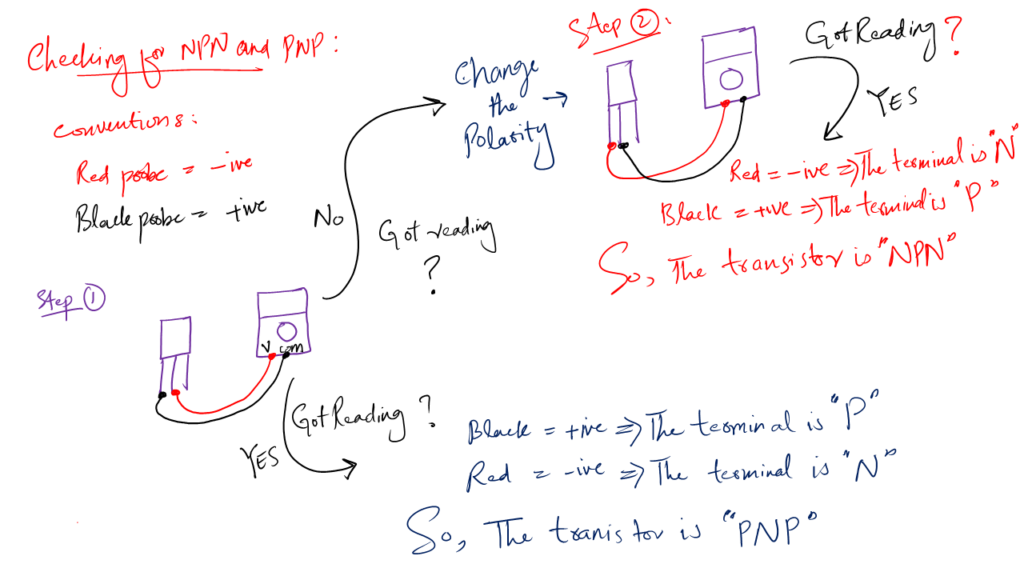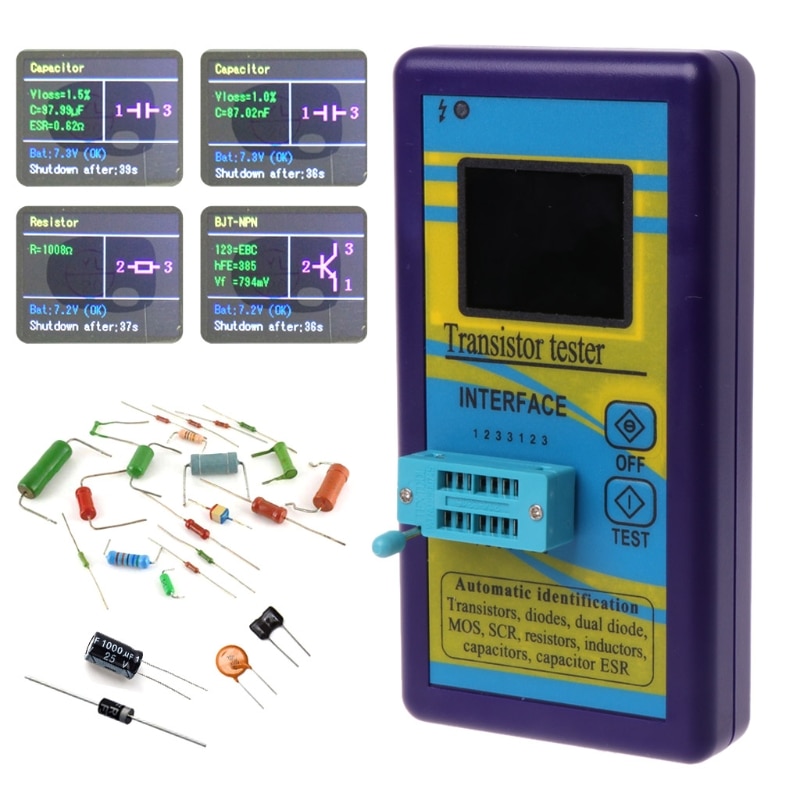The main milestone of working with transistors is – how to identify NPN and PNP transistors. I call it a milestone because this is a huge issue, especially when you are just getting started with electronics.
A transistor is one of the fundamental elements of an electronics circuit board. You will probably see any amplifier circuit without a transistor.
But when you are a beginner to transistors. The concept of the transistor feels very scary, or maybe it was just for me. You have to be very careful while configuring its right Q-points and other parameters
Finally, when you decide to put the transistor in action. The big problems you will face as a beginner are – configuring its rights pins & telling what type of transistor it is, i.e. NPN & PNP.
In this article, I will focus only on how to identify NPN and PNP transistors. I will write a separate article on the right pin configurations later on
I am not perfect, nor is this article. This is just my limited knowledge effort to help you guys somehow.
I hope you will enjoy it.
How to identify NPN & PNP transistors?
There are so many types of transistors out there designed for a specific application. NPN & PNP are not types of transistors, they are actually the subtypes of the Bipolar Junction Transistors (BJTs) family.

Yes, you can call them the types of transistors, but you should deeply know that they fall under the category of BJTs.
The above simple diagram shows the different symbols for NPN and PNP transistors. The problem is, that physically, they both feel and look the same.
So, how to identify which is NPN and which one is PNP? I have listed the following three beginner-level methods for your understanding.
Method 1: Broke student method
The first method is the “Broke student method”. I come up with this method when I was a student and had millions of dollars, actually billions of dollars in my pocket, in cash.
Following are the steps of this method:
Step 1: Take the transistor you want to check
Step 2: Write down its number (it is written on its body). Luckily, if your transistor doesn’t have the number written, or it is removed with time. Then this method will not help you.
Step 3: Google that number and download its datasheet (you will find every transistor datasheet online)
Step 4: In the datasheet you will exactly find out if it’s an NPN or PNP transistor just by looking at the circuit symbol. If there is no circuit symbol, there will be a written statement.
This method is not very straight forward as it may seem. Sometimes some transistors have series combined datasheets, some are very complex, and some are not available that easily online.
Apply this method if you occasionally work with transistors. You can use it as a student, as it is really helpful and doesn’t need you to buy a multimeter or any other device.
Method 2: Identify NPN & PNP using a multimeter
This method needs a decent multimeter and some basic level understanding of electronics concepts such as voltage, and resistance.
Now, let me just remind you that:
- NPN means negative, positive, and negative.
- PNP means positive, negative, and positive.
- Now, the red probe of a multimeter is negative, and the black probe is positive.

Following are the steps of this method to identify NPN and PNP transistor:
Step 1: Take the transistor you want to identify.
Step 2: Turn on your multimeter and set it to mV (DC).
Step 3: Make sure you have connected the probes in their correct respective multimeter sockets, i.e. black to the COM port and red to the V port
Step 4: Randomly start connecting the multimeter probes to the terminal of an unknown type of transistor.
Step 5: Now some random connection will give you a voltage reading on the multimeter screen. The value of reading is not important.
Step 6: Once you get results on the screen. Starting from the right (transistor plat side towards you) write or mark the probes attached to the terminals of the transistor.
Step 7: If it is like black (positive, P) first and red (negative, N) probe second, then you PNP transistor. If it is like red first and black send then, you have an NPN transistor – that easy and simple.
Method 3: The easy pezi method
You see, the above methods are not that easy to perform. You have to do a lot of steps to get the final results.
There is a need for a straightforward and new exciting method. I discovered this method lately, and I call it the easy pezi method.
For this method to work instead of a multimeter, you will need a dedicated transistor tester.
A transistor tester, often known as a component tester, is a device that makes our lives easy when it comes to testing and identifying various electronics components.

To use this device to identify NPN and PNP transistors – the following steps should be taken carefully.
- Step 1: Take the transistor you want to test
- Step 2: Turn on the transistor tester device and make sure it is working properly.
- Step 3: Place the transistor in the socket of the tester
- Step 4: Press the test button
- Step 5: See the results on the screen – that easy pezi
You see, using a dedicated transistor is that time-saving and helpful. If you want to have a transistor tester for yourself, you can search for it online. There are so many options there.
I really like this one, the m328 transistor tester (Amazon link). If you like it as well, then you should have it in your lab.
Or you might find the following article very useful in helping you find the best component tester for your need and requirements.
Conclusion
A transistor is a very useful and basic component to work with in electronics. But when are new to transistors, you have difficulty making it work fine for your circuit.
And most of the time it is very hard to find out the type of transistor, i.e. how to identify NPN and PNP transistors.
In this article, I try my limited knowledge best to share three methods that will help you check the type of BJT transistors.
The first one is very simple – google the number of that transistor, and download its datasheet. In the datasheet, you will exactly find what type of transistor you have.
The second method involves a multimeter, and the last one is done with the help of a dedicated transistor tester.
I hope you enjoyed my little efforts. I am not a perfect person – this article is my limited knowledge best try.
Thank you so much and have a great life
Other useful posts:

If you removed a shorted transistor from a panel how will you know wether it’s pnp or npn
The board usually mentioned If there is no information on the board or board schematic, then matching the number written on the body would be gooda way.